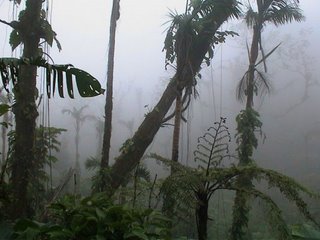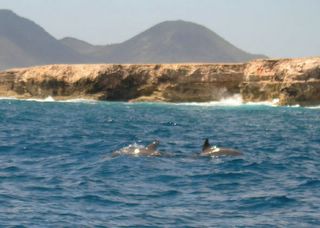
Oh Sweet St Maarten Land
When one thinks of a Caribbean island, many images come to mind; relaxing on a palm lined beach, the warm sun caressing your face, and the only exercise necessary is the bending of an elbow to bring an exotic drink –something coconutty and strong –to your lips. Or maybe the Caribbean means images of endless rum soaked nights spent dancing to the hot rhythms of reggae and soca only pausing to flirt with an island beauty or to take a few heady tokes. Or maybe the Caribbean means casinos, cabarets, and the cuisine which makes the islands one of the premiere culinary hotspots on the globe.
However, aside from these stereotypical images there is also a warmer, deeper side to the islands besides the warm West Indian sun and the cool blue Caribbean. And no island represents the plethora of activities, nationalities, societies, and cultures like the tiny twenty three square mile of unique Caribbean called St. Maarten. Many have heard of the island, but many haven’t, but to those who have come into contact with this special place have left with a feeling of amazement and refreshment, if not a fleeting but persistent yearn to return and a small sense of bewilderment.
St. Maarten is unique in many ways. It has one of the most diverse populations per square mile than most of the Caribbean. It is the smallest landmass in the world shared by two separate states; the Dutch Side (St. Maarten), which is part of the Netherlands Antilles, and the French Side (St Martin), which is a part Guadeloupe and an Overseas Department of France.
With this diverse makeup also comes the age old problem of communication; Dutch is the official language on the Dutch side and French (you guessed it) is the official language on the French side. But English is spoken everywhere; it is the official unofficial - or the unofficial official- language on both sides. However, walk along the island’s various districts and you may hear: French, Dutch, English in all of its forms, Creole, Spanish, Italian, Portuguese, Danish, Chinese, Arabic, Hindi, etc. etc. etc., they can all be heard. I once walked along the main shopping strip, Front Street, in the Dutch Side capital of Philipsburg, and I asked a man where he was from. He replied "Greenland"…seriously.
With this diverse mix of cultures comes a sort of cosmopolitanism which can be hard to find on many islands in the region. It is no unusual sight to see a Versace clad, Prada shaded, Louis Vuitton clutching French fashionista walking along the Rue General de Gaulle in Marigot, the capital of the French Side. Said fashionista probably didn’t get her getup along the Champs d’Elysee in Paris or the Via Condotti in Rome, but in the many ritzy boutiques found all over Marigot.
It is also usual to find that, walking along the same road as the fashionable and hip, a signing Rastaman chanting down Babylon and shaking his Natty dreadlocks in the Caribbean breeze. This is St Maarten life; a life of contrasts and contradictions which causes many to go there on vacation and still be on the same vacation twenty five years later.
In addition to the island’s deep diversity, St Maarten also caters to humanity’s basic needs: social interaction, food, drink, and relaxation -sleep doesn’t count, you can do that when you’re dead. Though these needs are basic, St Maarten in no way caters to them in a basic way.
Let’s start with social interaction; there is literally something to do on the island every day of the week, from sunup to sunup. Whether you like to SCUBA dive and intimately get to know some of the fish you will be having for dinner, or if you like to dance the night away every night of the week, is solely up to you. There is something for everyone. There are clubs which cater to the upscale, Eurochique, champagne guzzling, techno dancing rich; to the down-home, Guinness drinking, dancehall grinding Rude Bwoi. The latest movies can be seen in multi-screen theaters, there are plays and concerts, poetry readings, sports events, house parties, sports bars (don’t miss ‘Time Out’), Tittie Bars, Strip Joints, whatever. If you can think it up, its there,
Let’s move on to food. St. Martin (note the spelling) is known as the culinary capital of the Caribbean, with many notable restaurants on the Dutch side as well. If you like, you can get up and have traditional ‘ackee and saltfish’ from Jerk Jamaican Restaurant, have a burger at Burger king as a snack, eat Ital food at the Ital Shack for lunch, have a liquid meal at the Green House at five, and then eat caviar, foie gras, braised duckling in mango sauce, and wash it down with a red Chateau Petrus from your birth year for dinner at any restaurant in the gourmet village of Grand Case. And that was just a sample; there are hundreds of choices in cuisine, from Arabic to Creole.
When it comes to drinking and bars, St Maarten has perfected the ancient art of the ‘Happy Hour’, which is known to any old cheap rummer throughout the globe. If you have a high tolerance for alcohol and someone to drive you home (you can also walk, take a bus, or call a cab) you can literally hit the happy hour circuit from three in the afternoon and end at three in the morning. The happy hours range from one dollar beers, to drinks half off, to two for ones, three for ones, or simply free. The drinks range from Heinekens for a buck to the vicious rum concoction called Ti Punch or a bottle of Crys for a grand. The bars range from the Dominican Presidente joints to piano bars where you can rub shoulders with the rich and famous.
Relaxation is a perfected way of life on the island. St. Maarten is very beautiful; with rolling green hills and palm lined beaches -thirty two of them in fact. The water is always warm and often clear, and the sand ranges from volcanic black to coral pink. There are quaint villages which can be explored and warm, friendly faces to have conversations with. One can discover two distinct cultures and vibes; both of them similar and both of them unique in that Caribbean way. One can go hiking, mountain biking, parasailing, SCUBA diving and snorkeling, surfing, sailing, whatever. Life is lived outdoors and the rhythm of the islands is everywhere.
The island is also known for its duty free and tax free shopping. Anything, or almost anything, can be bought in the shopping meccas of Marigot and Philipsburg. Everything from cheap liquor –in some cases a bottle of rum costs less than a bottle of water- to cars and motorcycles can be bought on the island.
If clothing is your thing, whether it is street fashion or Haute Couture, you can fulfill you shopping dreams anywhere on the island. The areas of Maho, Philipsburg, and especially Marigot all offer the three-t shirts-for-a-dollar deals as well as designer suits and dresses which could set you back a couple of g’s.
However, St Maarten is especially known for its inexpensive jewelry and electronics. You can buy your I-Pod completely tax free and all along Front Street in Philipsburg there are dozens of jewelry stores where you can buy inexpensive silver jewelry as well as a blinged out diamond encrusted Patek or a fifty thousand dollar string of Mikimoto pearls.
The Jewelry on the island is inexpensive and of high quality. And unlike that necklace you bought at the flea market, won’t turn green in a couple of weeks.
Aside form the daily parties and bar hopping opportunities which make St Maarten unique, the island is also a festival hotspot. Because the island has two separate sides, you can celebrate that most Caribbean of festivities, carnival, twice in one year. The event on the French Side is more relaxed and laid back, while carnival on the Dutch Side is definitely the biggest street party on the island. For two weeks starting in April, visitors and locals alike gyrate and ‘wokup’ en mass thru the streets. There are street parades where people don the most extravagant costumes and dance to soca music for two days in a row. There is also a children’s parade where youngsters have the opportunity to showcase themselves in costumes worth hundreds of dollars.
Carnival culminates in the early morning J’Ouvert Jump Up, the king of all street dances which starts at four in the morning and ends sometimes a little before noon. Thousands of people dance behind a half dozen semi’s which continuously pump out live calypso music.
The centre of carnival is the Carnival Village, or just simply ‘the village’; a collection of booths selling local food and drink. The many live shows are also held in the village and range from beauty pageants and calypso competitions to Zouk and Kompa nights, Reggae fests, and Hip Hop concerts.
Another unique event unique to the island is the Heineken Regatta. This boat race, which is one of the largest in the world, is held at the beginning of March, and also features concerts and parties throughout the whole island -past highlights include the Black Eyed Peas and Jimmy Cliff- as well as all the Heinekens you can manage to consume.
During the hot summer months, the island finds herself in the grips of the equally hot Summerfest. For two weeks in July some of the biggest names in music croon and entertain locals and visitors. The concerts, held at the island’s cruise facilities, have featured names such as Vybez Cartel, Fat Joe, and Yolanda Adams.
Aside form the major events, concerts are held throughout the year and St Maarten also acts as the jump-off point to festivals on the neighboring islands such as the Creole Music Festival on Dominica, the St Lucia Jazz Festival, and the St Kitts/Nevis Music Festival. There are also smaller festivals in St Barths as well as the small but fun Saba Carnival during the summer.
Another party worth mentioning is August Monday on Anguilla. On the first Monday in august, St. Maarten invades the tiny island of Anguilla to partake in the biggest beach BBQ and beer fest in the northeastern Caribbean. There is live music on the beach, good seafood, people watching galore, boat races and plenty to drink.
St. Maarten also acts as a gateway to the surrounding islands. There are various airline companies, including WINAIR, LIAT, and BWIA, which serve the region and are relatively inexpensive. The International airport on the island is the second busiest in the Caribbean –after Puerto Rico- and is currently undergoing a major facelift including new runways and a new terminal. The project is slated to be completed in 2007.
One of the joys of living in, and visiting, a travel hub such as St Maarten is that for little money you can make a daytrip –or a two, three, four day trip- to any of the surrounding islands. Whether you want to party with the international jet set on ritzy St Barths; visit some of the most exclusive hotels and beaches on the globe in Anguilla; or experience world class diving and hiking, excellent cuisine, and laid back island life on Saba, you can all reach them by ferry from St Maarten. All of the ferries range from thirty to a hundred bucks, and you can leave in the morning and return at night.
There are also cheap commuter flights to the above mentioned islands as well as to green St Kitts and Nevis and the historically rich island of St Eustatius, also called Statia.
When in St Maarten make an effort to scratch the surface. It is not always about fun, sun, and soca. There is not another place like it on earth. Look a little deeper and you might discover something, somewhere, from the village of Agrement to the district of Zagersgut, which might make you realize that this tiny island in the blue Caribbean might just change the way you look at the world. And might even change the way you look at yourself.









